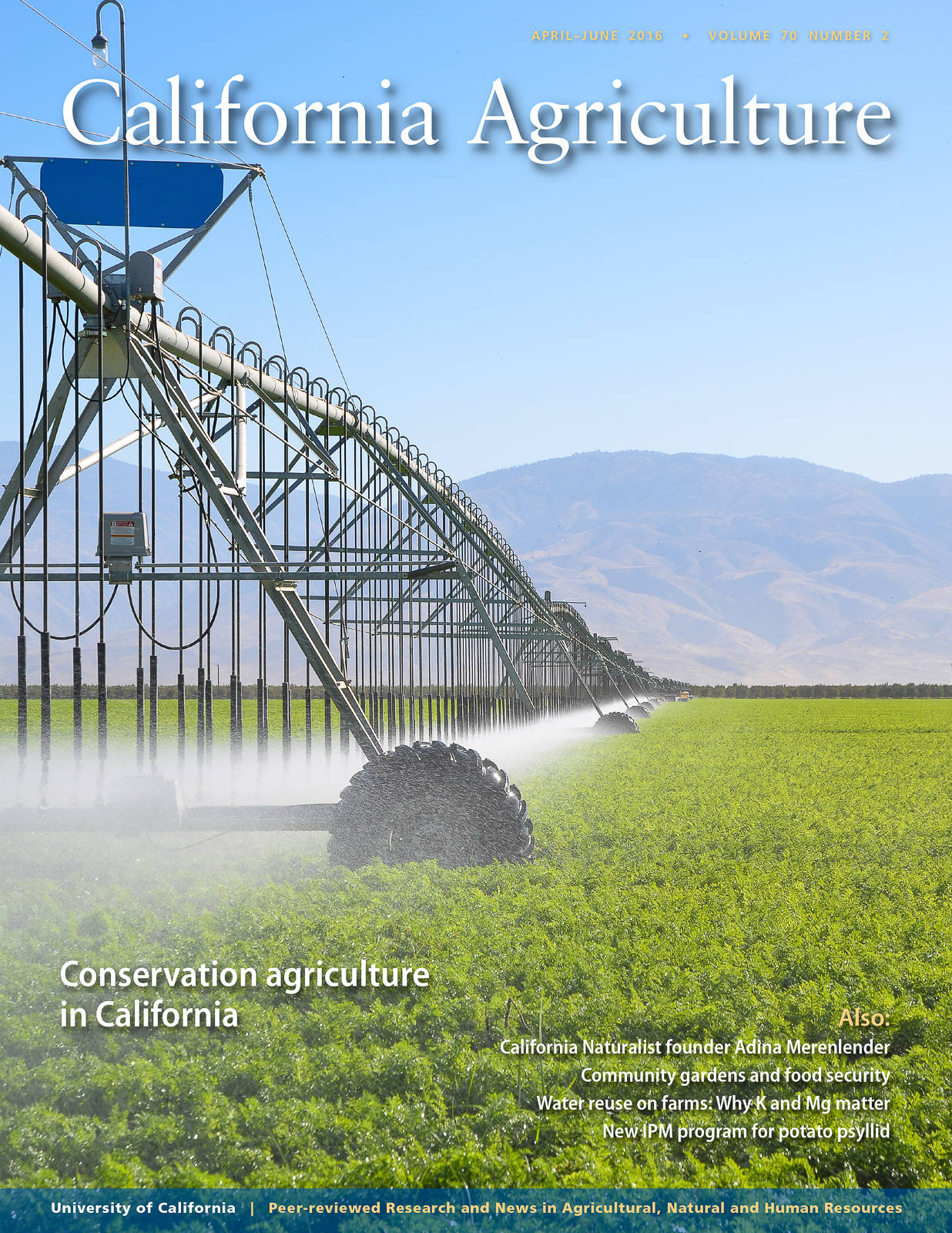All Issues

Editor Jim Downing talks about what's in the current issue of California Agriculture journal — wild horses, the economics of beef, groundwater in California and more.
Volume 70, Number 2




Editor Jim Downing talks about what's in the current issue of California Agriculture journal — wild horses, the economics of beef, groundwater in California and more.
|
|||
|
|||

Conservation agriculture in California
Cover:
Editor Jim Downing talks about what's in the current issue of California Agriculture journal — wild horses, the economics of beef, groundwater in California and more.
April-June 2016
Volume 70, Number 2 News and opinionGeneral InformationLETTERS
Letters to the editor
|
|||
|
University of California, 1301 S. 46th St., Bldg. 478 Richmond, CA
|